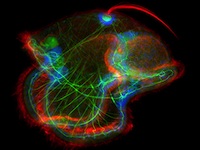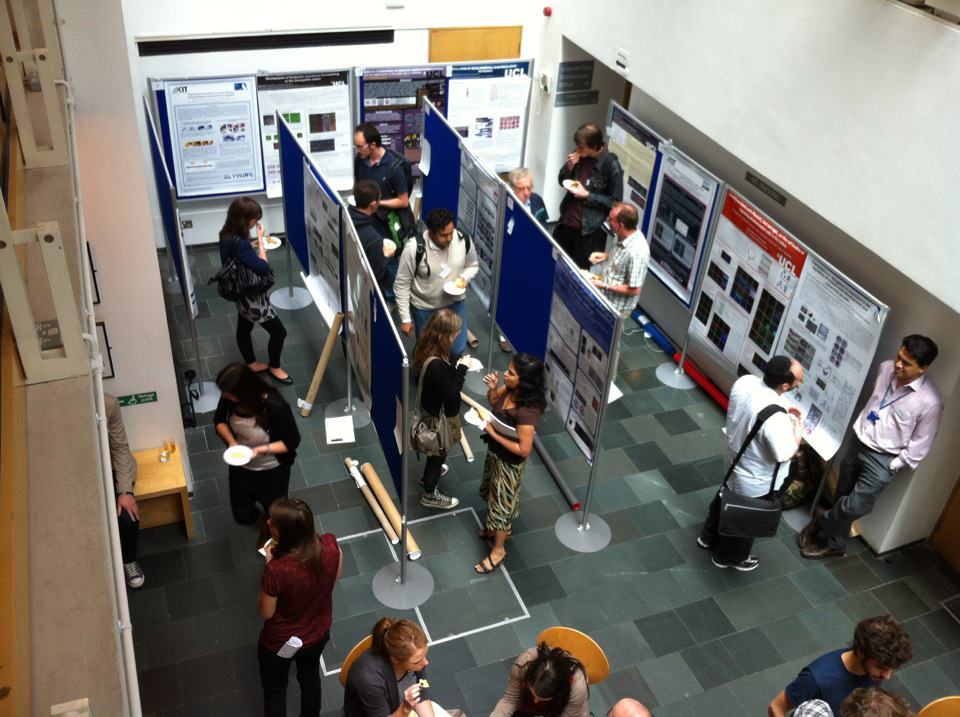The following editorial by Nipam Patel appears in Development issue 139(15). The corresponding Featured Topic on Evolutionary Crossroads in Developmental Biology includes all the primer articles mentioned and linked in the editorial.
 Currently, most developmental biologists work on one or more of a relatively small number of experimental systems, such as Arabidopsis thaliana, Drosophila melanogaster (fruit fly), Xenopus laevis (frog), Caenorhabditis elegans (nematode), Danio rerio (zebrafish) and Mus musculus (mouse), and their research is largely focused on understanding developmental mechanisms at the genetic, biochemical and molecular levels. This bias toward certain species is easily understood – analyses in these organisms is greatly facilitated by the availability of an array of genetic, molecular and genomic resources that have been generated over the years by large communities of scientists. However, the field of developmental biology has a long and colourful history of experimentation with a remarkably varied assemblage of creatures, and many crucial discoveries were first made in species that are now relatively understudied. Furthermore, some species possess certain remarkable attributes that have generated interest for a very long time. For example, the axolotl (Ambystoma mexicanum, a Mexican salamander) is considered to be the champion of regeneration among vertebrates, and although the number of people working with axolotls is relatively small, they remain a species of great interest because of the potential breakthroughs that might come from them.
Currently, most developmental biologists work on one or more of a relatively small number of experimental systems, such as Arabidopsis thaliana, Drosophila melanogaster (fruit fly), Xenopus laevis (frog), Caenorhabditis elegans (nematode), Danio rerio (zebrafish) and Mus musculus (mouse), and their research is largely focused on understanding developmental mechanisms at the genetic, biochemical and molecular levels. This bias toward certain species is easily understood – analyses in these organisms is greatly facilitated by the availability of an array of genetic, molecular and genomic resources that have been generated over the years by large communities of scientists. However, the field of developmental biology has a long and colourful history of experimentation with a remarkably varied assemblage of creatures, and many crucial discoveries were first made in species that are now relatively understudied. Furthermore, some species possess certain remarkable attributes that have generated interest for a very long time. For example, the axolotl (Ambystoma mexicanum, a Mexican salamander) is considered to be the champion of regeneration among vertebrates, and although the number of people working with axolotls is relatively small, they remain a species of great interest because of the potential breakthroughs that might come from them.
Another important reason that some developmental biologists have maintained interests in animals, plants and fungi outside of the main experimental systems comes from a desire to understand the evolution of development. Most of our model species are evolutionarily distant from one another, and in some cases certain aspects of their development are derived with respect to other closely related species. For example, the study of segmentation in Drosophila melanogaster has produced a multitude of remarkable insights into basic developmental mechanisms, but many of the well-understood steps in early patterning are atypical of the process of segmentation in arthropods as a whole. For this reason, developmental biologists have studied other arthropods, such as mosquitoes, beetles, crickets, grasshoppers, centipedes and spiders, to understand the diversity of developmental mechanisms at work in the process of segmentation. When placed into a phylogenetic framework, such comparative studies can also provide us with hypotheses as to how the process of segmentation has evolved within the arthropods and give us better insight into how segmentation is related between phyla.
The interest in such comparative studies and their implications stretches back through the entire history of developmental biology. The important evolutionary insight that they provide has long been recognised; Charles Darwin even devotes an entire chapter of The Origin of Species to a discussion of how development can help unravel the pattern and process of evolution. In more recent decades, genetics has proven to be a key bridge between developmental and evolutionary biologists. Although developmental and evolutionary geneticists often seem to speak very different languages, there is an increasing awareness of what one can contribute to the other, and a synthesis between the two has begun to yield remarkable insights in many cases. Furthermore, the ability to work with an increasing diversity of species has received a major boost owing to several technical breakthroughs. These include the genomic tools that allow us to quickly compare the genes that are shared and not shared between species, techniques such as in situ hybridisation, microarrays and transcriptome sequencing that facilitate comparative studies of the timing and pattern of gene expression and, finally, new tools for functional analyses that take advantage of breakthroughs in RNAi and transgenic technology.
For these reasons, research into the development of many species outside of the major experimental systems has flourished in recent years. Some, such as sea urchins, have indeed been studied for a very long time and can arguably now be placed in the pantheon of major ‘model’ systems. Their phylogenetic position as a sister group to the chordates provides insights into deuterostome origins, but at the same time they have made many direct contributions to our understanding of developmental mechanisms outside of any evolutionary context. Others, such as the cnidarian Nematostella, have risen to prominence relatively recently.
Starting about two years ago, Development began to publish a series of Primer articles under the banner ‘Evolutionary crossroads in developmental biology’, which aimed to review advances that have come from particular organisms, or closely related groups of organisms, that lie outside of the major experimental systems. Ten of these Primers have been published so far, and the organisms covered include Dictyostelium discoideum [slime mold (Schaap, 2011)], Cnidaria [including both Hydra and Nematostella (Technau and Steele, 2011)], cyclostomes [lamprey and hagfish (Shimeld and Donoghue, 2012)], tunicates (Lemaire, 2011), sea urchins (McClay, 2011), Physcomitrella patens [moss (Prigge and Bezanilla, 2010)], amphioxus (Bertrand and Escriva, 2011), annelids [including Platynereis, leech and Capitella (Ferrier, 2012)], spiders (Hilbrant et al., 2012) and hemichordates [including the acorn worm Saccoglossus kowalevskii (Röttinger and Lowe, 2012)]. Each Primer provides an overview of the phylogenetic position of the species, the experimental tools and techniques that are available for studying these organisms, and the evolutionary questions that can be addressed using this organism. It is important to remember that none of these are living ancestors, although some are thought to retain particularly striking ancestral features. For example, present day amphioxus is not the ancestor to all chordates, but it can be well argued that its genome has retained many ancestral features. Nevertheless, when placed into a phylogenetic context, each of the species discussed in these Primers can be used to make deductions about various common ancestors that did once exist. In so doing, this gives us insights into macroevolutionary processes that have shaped animal, plant and fungal diversity. Each article also highlights the usefulness of each species from a purely developmental perspective, and illustrates the impressive progress that can be made by relatively small communities of researchers applying modern tools.
Our world depends on maintaining biodiversity for its survival and, in a similar vein, the field of developmental biology is also strengthened by maintaining a wide diversity of experimental systems, each with its own unique and fascinating biology and place within the tree of life. This set of Primer articles is likely to expand as other non-model organisms are studied and developed, and will hopefully prove useful to those with a broad perspective on what it means to be a developmental biologist.
 (2 votes)
(2 votes)
 Loading...
Loading...


 (No Ratings Yet)
(No Ratings Yet) Currently, most developmental biologists work on one or more of a relatively small number of experimental systems, such as Arabidopsis thaliana, Drosophila melanogaster (fruit fly), Xenopus laevis (frog), Caenorhabditis elegans (nematode), Danio rerio (zebrafish) and Mus musculus (mouse), and their research is largely focused on understanding developmental mechanisms at the genetic, biochemical and molecular levels. This bias toward certain species is easily understood – analyses in these organisms is greatly facilitated by the availability of an array of genetic, molecular and genomic resources that have been generated over the years by large communities of scientists. However, the field of developmental biology has a long and colourful history of experimentation with a remarkably varied assemblage of creatures, and many crucial discoveries were first made in species that are now relatively understudied. Furthermore, some species possess certain remarkable attributes that have generated interest for a very long time. For example, the axolotl (Ambystoma mexicanum, a Mexican salamander) is considered to be the champion of regeneration among vertebrates, and although the number of people working with axolotls is relatively small, they remain a species of great interest because of the potential breakthroughs that might come from them.
Currently, most developmental biologists work on one or more of a relatively small number of experimental systems, such as Arabidopsis thaliana, Drosophila melanogaster (fruit fly), Xenopus laevis (frog), Caenorhabditis elegans (nematode), Danio rerio (zebrafish) and Mus musculus (mouse), and their research is largely focused on understanding developmental mechanisms at the genetic, biochemical and molecular levels. This bias toward certain species is easily understood – analyses in these organisms is greatly facilitated by the availability of an array of genetic, molecular and genomic resources that have been generated over the years by large communities of scientists. However, the field of developmental biology has a long and colourful history of experimentation with a remarkably varied assemblage of creatures, and many crucial discoveries were first made in species that are now relatively understudied. Furthermore, some species possess certain remarkable attributes that have generated interest for a very long time. For example, the axolotl (Ambystoma mexicanum, a Mexican salamander) is considered to be the champion of regeneration among vertebrates, and although the number of people working with axolotls is relatively small, they remain a species of great interest because of the potential breakthroughs that might come from them. (2 votes)
(2 votes)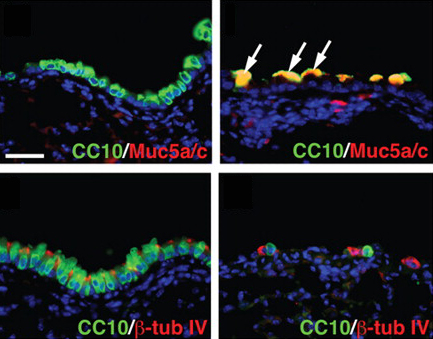
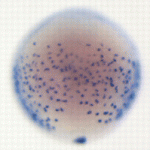 The Hedgehog (Hh) pathway controls both patterning and proliferation during development, but how do embryonic cells distinguish between these activities? On p.
The Hedgehog (Hh) pathway controls both patterning and proliferation during development, but how do embryonic cells distinguish between these activities? On p.  Stem cells are specified and maintained by specific microenvironments called niches. In the Drosophila testis, somatic cyst stem cells (CySCs) give rise to cyst cells, which ensheath the differentiating germline stem cells (GSCs). Both stem cell pools are arranged around a group of somatic cells – the hub – that produce niche signals for both lineages. Now, Christian Bökel and co-workers report that CySC but not GSC maintenance requires Hedgehog (Hh) signalling in addition to Jak/Stat pathway activation (see p.
Stem cells are specified and maintained by specific microenvironments called niches. In the Drosophila testis, somatic cyst stem cells (CySCs) give rise to cyst cells, which ensheath the differentiating germline stem cells (GSCs). Both stem cell pools are arranged around a group of somatic cells – the hub – that produce niche signals for both lineages. Now, Christian Bökel and co-workers report that CySC but not GSC maintenance requires Hedgehog (Hh) signalling in addition to Jak/Stat pathway activation (see p. 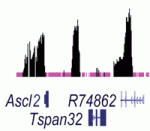 Noncoding RNAs (ncRNAs) help to establish transcriptional gene silencing during development by interacting with DNA and chromatin-modifying enzymes. But do they also help to maintain gene silencing? Here (p.
Noncoding RNAs (ncRNAs) help to establish transcriptional gene silencing during development by interacting with DNA and chromatin-modifying enzymes. But do they also help to maintain gene silencing? Here (p.  Hundreds of microRNAs (miRNAs) – short RNAs that mediate networks of post-transcriptional gene regulation – have been recorded in animals. Because cell-based assays and bioinformatics provide evidence for large numbers of functional targets for individual miRNAs, it is not obvious that manipulation of miRNAs will lead to interpretable phenotypes at the organismal level. However, on p.
Hundreds of microRNAs (miRNAs) – short RNAs that mediate networks of post-transcriptional gene regulation – have been recorded in animals. Because cell-based assays and bioinformatics provide evidence for large numbers of functional targets for individual miRNAs, it is not obvious that manipulation of miRNAs will lead to interpretable phenotypes at the organismal level. However, on p. 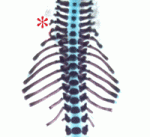 During the development of the vertebrate axial skeleton, Hox genes belonging to paralog group 10 play a role in blocking rib formation in the lumbar region of the vertebral column. Here (p.
During the development of the vertebrate axial skeleton, Hox genes belonging to paralog group 10 play a role in blocking rib formation in the lumbar region of the vertebral column. Here (p.  Epidermal growth factor receptor (EGFR) signalling regulates numerous processes throughout Drosophila development. For example, during oogenesis, an EGFR activation gradient induced by Gurken (a TGFα-like ligand secreted from the oocyte) patterns the follicular epithelium. On p.
Epidermal growth factor receptor (EGFR) signalling regulates numerous processes throughout Drosophila development. For example, during oogenesis, an EGFR activation gradient induced by Gurken (a TGFα-like ligand secreted from the oocyte) patterns the follicular epithelium. On p.  Tissue regeneration has been studied for hundreds of years, yet remains one of the less understood topics in developmental biology. The recent Keystone Symposium on Mechanisms of Whole Organ Regeneration, reviewed by Gregory Nachtrab and Kenneth Poss, brought together biologists, clinicians and bioengineers representing an impressive breadth of model systems and perspectives. See the Meeting Review on p.
Tissue regeneration has been studied for hundreds of years, yet remains one of the less understood topics in developmental biology. The recent Keystone Symposium on Mechanisms of Whole Organ Regeneration, reviewed by Gregory Nachtrab and Kenneth Poss, brought together biologists, clinicians and bioengineers representing an impressive breadth of model systems and perspectives. See the Meeting Review on p. 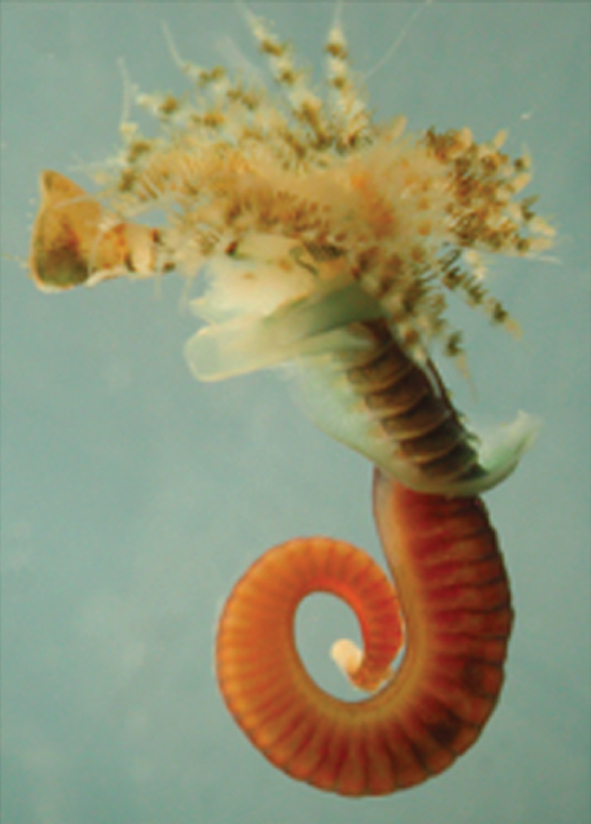 Annelids (the segmented worms) have a long history in studies of animal developmental biology, particularly with regards to their cleavage patterns during early development and their neurobiology. As reviewed by David Ferrier, Annelida are playing an important role in deducing the developmental biology of the last common ancestor of the protostomes and deuterostomes.
Annelids (the segmented worms) have a long history in studies of animal developmental biology, particularly with regards to their cleavage patterns during early development and their neurobiology. As reviewed by David Ferrier, Annelida are playing an important role in deducing the developmental biology of the last common ancestor of the protostomes and deuterostomes.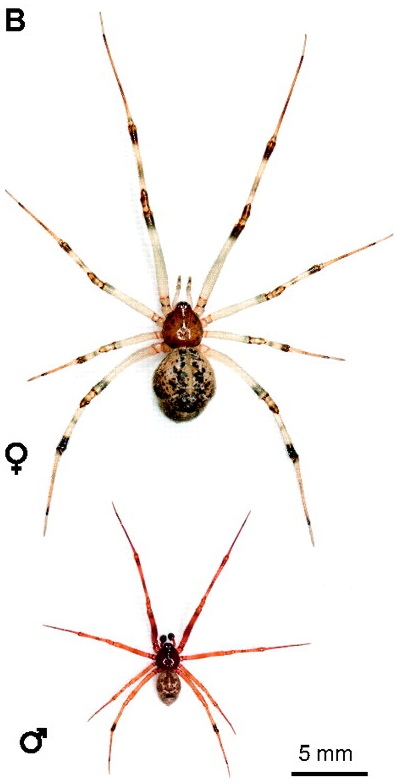 Spiders belong to the chelicerates, which is an arthropod group that branches basally from myriapods, crustaceans and insects. Hilbrant, Damen and McGregor describe how the growing number of experimental tools and resources available to study Parasteatoda development have provided novel insights into the evolution of developmental regulation and have furthered our understanding of metazoan body plan evolution.
Spiders belong to the chelicerates, which is an arthropod group that branches basally from myriapods, crustaceans and insects. Hilbrant, Damen and McGregor describe how the growing number of experimental tools and resources available to study Parasteatoda development have provided novel insights into the evolution of developmental regulation and have furthered our understanding of metazoan body plan evolution. (14 votes)
(14 votes)
